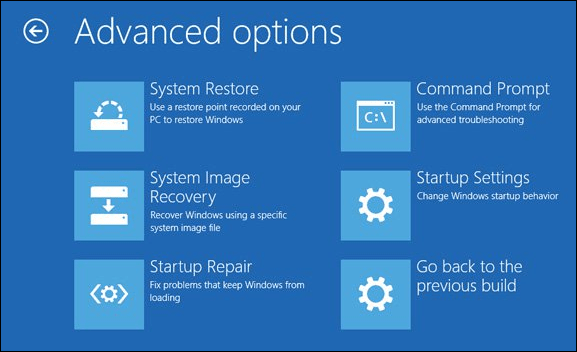HOW TO: Creating a Data Backup in both Windows 10 & 11 (step-by-step)
Posted by Tehillah Mwakalombe on 25th May 2023
In this blog, we’ll show you how to properly create a “system repair disk” and “system image backup” on both Windows 10 and Windows 11. The System Repair disk is basically a user-created drive used to repair and restore missing/damaged system files. This means that whenever you need repair utilities and troubleshooting tools like Startup repair, system image recovery, windows memory diagnostics, and the Command prompt you can use the drive!

it’s more important than ever to create a System Repair Disc and frequent System Image Backups in Windows 10 or 11 so you’ll be able to quickly and easily restore your Windows installation if a bad update causes a problem or you experience a drive failure.

In a nutshell, creating a System Image Backup essentially makes an exact copy of everything that’s currently stored on the drive. That includes Windows 10/11 itself and all installed programs and apps along with all of your photos, your ‘Office’ files and every other file that is on the drive at the time the backup is created.
WINDOWS 10
Windows 10 makes it very easy to protect your files and Windows installation by creating a System Image Backup onto an external USB hard drive. Just follow the steps below.
First, you’ll need to create a System Repair Disc if you don’t have one already. Here’s how:
1. Click the Start button, the type the words control panel.
2. Select Control Panel from the list of search results.
3. Click System and Security.
4. Click File History.
5. Click the System Image Backup link that’s located in the lower left-hand corner of the window.
6. Click Create a system repair disc. Follow the prompts that follow to create the disc.
Next, create a System Image Backup. Here’s how:
1. Click the Start button, the type the words control panel.
2. Select Control Panel from the list of search results.
3. Click System and Security.
4. Click File History.
5. Click the System Image Backup link that’s located in the lower left-hand corner of the window.
6. Click Create a system image. Follow the prompts that follow to create the backup image.
7. Repeat the steps above on a regular basis to ensure that you always have a recent backup image on hand.
Now you’ll be able to use your System Repair Disk and the latest System Image Backup to restore your Windows installation if a flawed update, a bad hard drive or some other issue ruins your system.
How to create a System Image Backup with WINDOWS 11
1. Connect an external hard drive or SSD that’s large enough to store the contents of the drive you plan to back up to your computer.
2. Click the Start button and then immediately type the words control panel.
3. Select Control Panel from the list of search results after it pops up.
4. Click System and Security.
5. Click File History.
6. Click the System Image Backup link in the lower left-hand corner of the window.
7. Click the Create a system image link in the left-hand column. Windows will now perform a quick scan and list the currently available backup drives.
8. Select the external hard drive or SSD you want to save the backup file to from the drop-down list in the “on a hard disk” section.
9. Click Next.
10. Click the Start backup button.
After the process is complete you should disconnect the backup drive from your PC and store it in a safe place. Now if the need ever arises you’ll be prepared to restore your system back to the state it was in at the time that backup was created.

Just be aware that any files that were saved or created after the most recent backup was made will be lost if something happens to wipe out your files. Therefore, it’s very important that you make frequent backups if you save or create new files on a regular basis.

